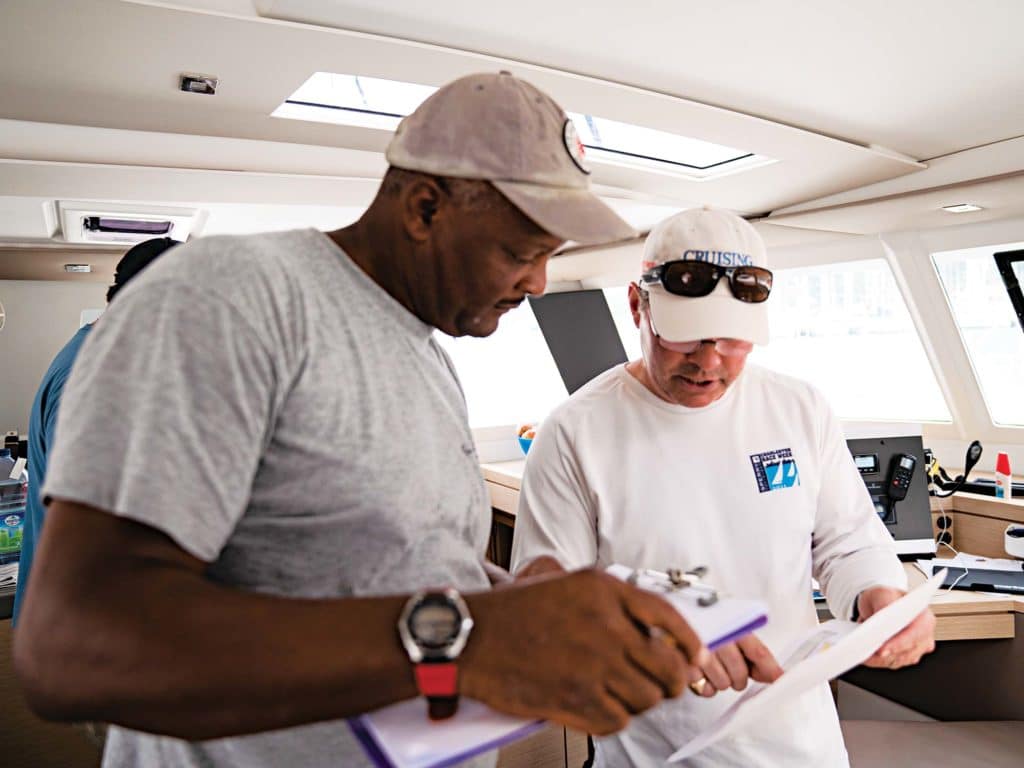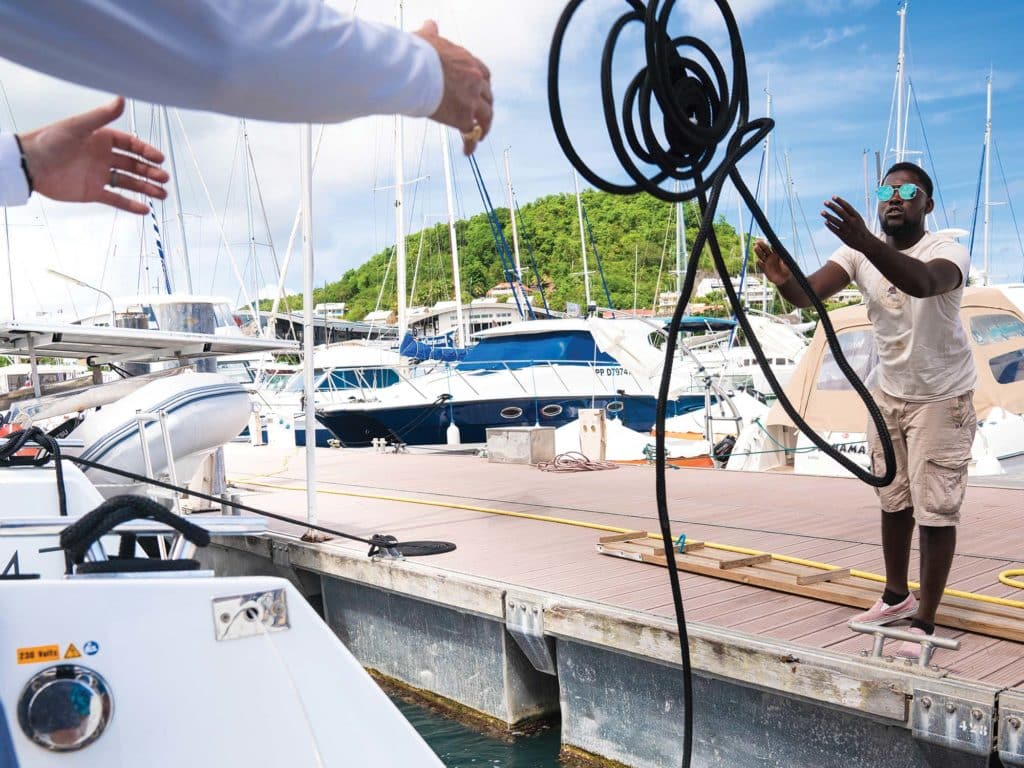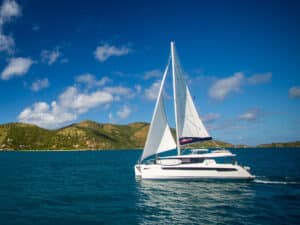
Returning your bareboat to the charter base always signals the end of a wonderful adventure, but too many crews rush the process. Smart crews plan ahead for the check-in process to avoid being hit with a sizable credit-card charge.
Turnaround day is a nightmare for check-in crews, who are under pressure to get a boat ready for the next bareboater. Divvying up your own crew’s responsibilities can help make sure things go smoothly. The skipper should be responsible for working with the check-in crew, but others can handle cleaning the boat, returning water toys, and disposing of food. One member of your crew can also go to the charter base to confirm your return flights, check the times, and arrange for taxi transfers.
You’re expected to leave the boat reasonably clean, or you’ll get hit with a cleaning fee. Gather all your belongings and repack your duffel bags so that you can move off the boat as soon as you reach the base. Most bases have secure storage areas for that purpose, and it makes the check-in process easier (and more accurate).
If you have extra food (everyone always does), share it with the check-in or dock crew. They’ll appreciate it. If they can’t use it, offer it to a bareboat crew about to depart.

Nearly every charter company requires you to top off the fuel tank and empty the holding tank for the head. During your initial check-out, ask which is the least-expensive fuel dock.We discovered on one charter that there were several fuel docks, but one offered a free holding-tank pump-out if we filled the tank. Guess which dock we chose?
The charter company may have provided you with a maintenance checklist for use during the charter, and that often has a place to note any problems you encountered (pilots call it a “squawk sheet”). If not, then keep your own log of problems so that you can report them as soon as you reach the dock. Doing so absolves you of charges in the future for things that weren’t your fault, and helps the dock crew fix the problems before the boat goes out on the next charter.
If you borrowed or rented water toys, then delegate someone to check them in, and get a signed receipt as well as a completed credit-card slip. The same thing applies if you rented electronics such as a handheld VHF radio. Don’t leave town without signed receipts.
Get the check-in crew aboard for a walk-through. Have a copy of the inventory, and go through it item by item. Remember that for many charter check-in staff, English is a second (or third) language, so there might be communication difficulties.
Many charter companies send a diver down to look at the bottom of the boat. Prearrange to have this done while you’re aboard doing the interior check-in. When you’re done, get a signed receipt giving you a clean bill of health for the interior and exterior, as well as the underwater surfaces. That receipt will come in handy if, say, the dock crew wrap a line around the prop after you depart, causing damage that otherwise might be attributed to you.
Remember the “out-of-sight” gear. Raise the main and unfurl the jib to show that they are in the same condition as they were received. The anchor windlass is often overlooked, so have your check-in team test it to show that you haven’t overloaded it and burned out the motor.
Speaking of motors, the outboard has a damage charge for dunking, so have the crew start it to prove that it hasn’t gone for a swim.
Take the time to document everything with photographs. Take pictures of the hull, deck, cockpit and interior from all angles. Last, make sure that your security deposit is refunded, and that you get a receipt for the complete cost of the charter.
One of the most pleasant check-ins we’ve ever had was in the South Pacific when our plane wouldn’t depart until late afternoon. We’d completed the return in a leisurely fashion, and settled into comfortable chairs in the shade of palm trees to sip cool drinks and finish the books we’d started on the trip. That’s the dream.
Chris Caswell is an award-winning writer, a regular contributor to CW, and the editor/publisher of CharterSavvy, the online magazine about bareboat charters.








